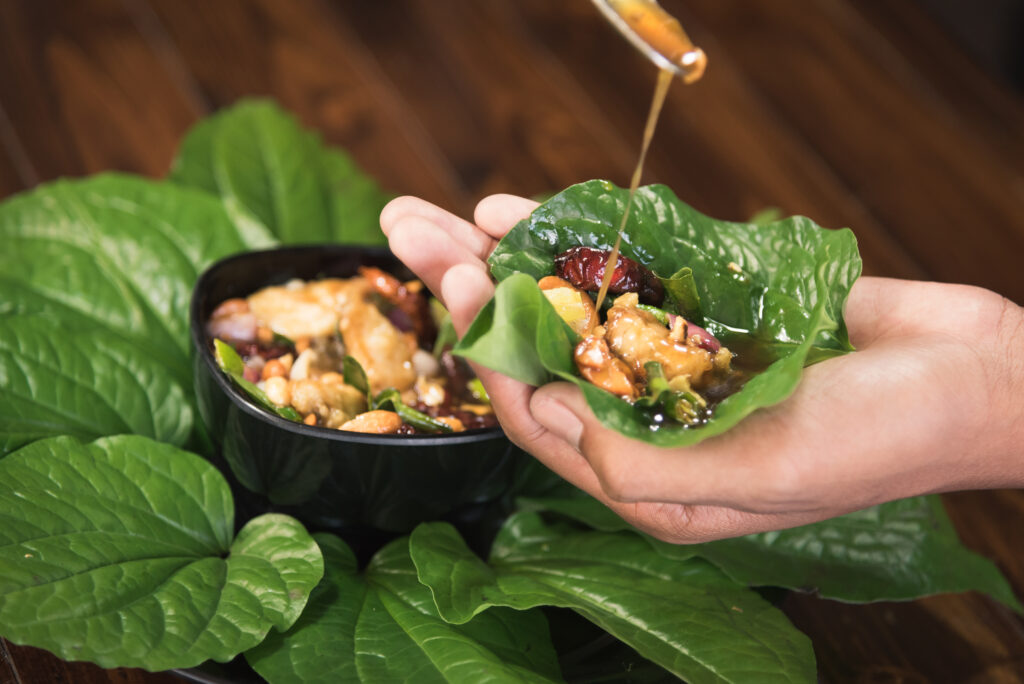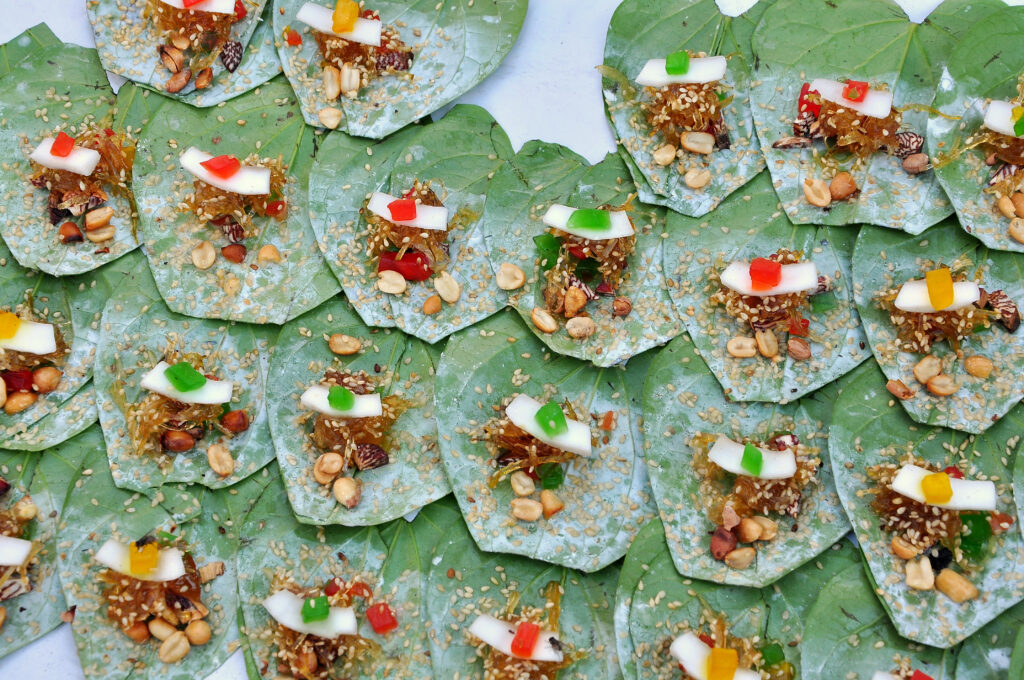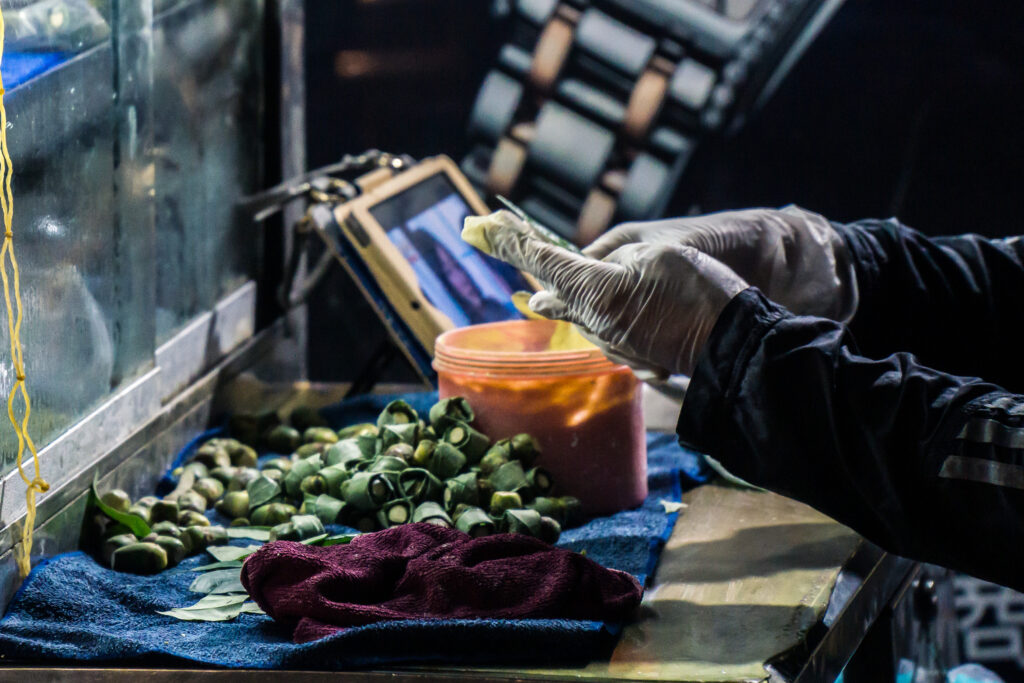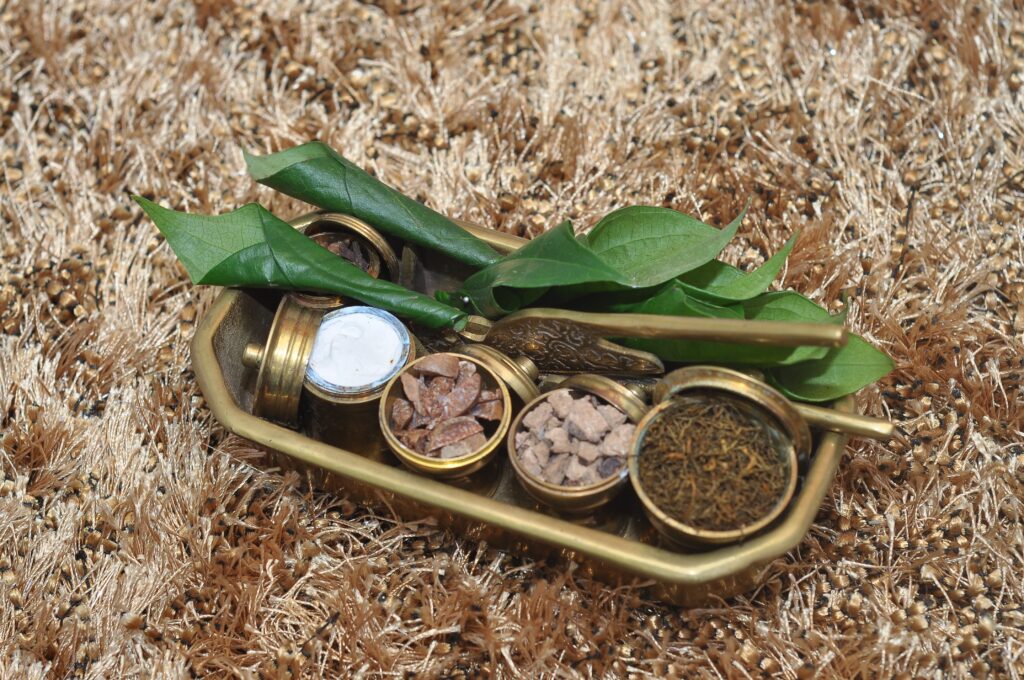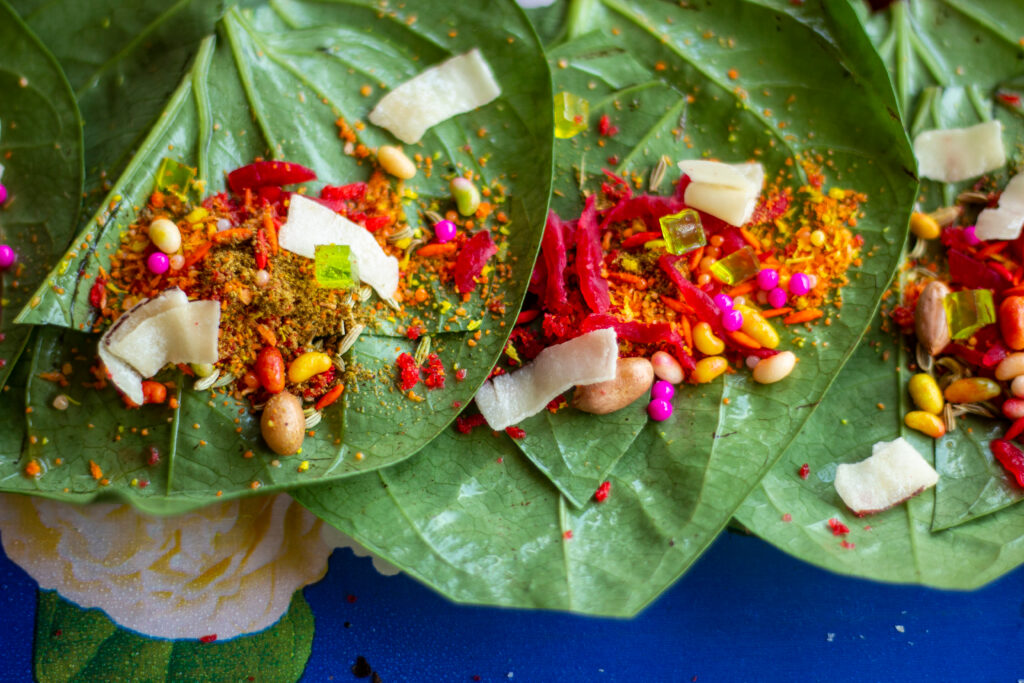An Indian street vendor selling betel leaves
Known for its distinctive heart shape, the versatile betel leaf has been incorporated into many tasty dishes across Asia. Here are 6 unique betel leaf dishes you can find across the region.
Text by Khushi Makasare
Images from Shutterstock
MIANG KHAM
Originating from northern Thailand, miang kham is a Thai favourite. The direct translation of Miang kham is “one bite wrap” – an apt name. It is filled with roasted coconut shavings, lime, nuts, and dried shrimps and securely wrapped in a cha phlu (wild betel) leaf. The wrapped delight is drizzled with palm syrup or sugarcane syrup and is cooked with lemongrass, galangal, ginger, and fish sauce.
BÒ NƯỚNG LÁ LỐT
A meaty twist on paan sold by street vendors is universally loved by the Vietnamese. Wild betel leaves wrapped around spice-marinated pork and beef are grilled over coal for a smoky touch. The dish is garnished with sliced spring onions and chopped peanuts and is traditionally served alongside nước chấm, a fish dipping sauce.
KWUN-YA
A combination of betel leaf, areca nut, and slaked lime, kwun-ya is the Burmese take on paan. To heighten the taste and aroma of the flavour-packed pouch, cardamom, anise, cloves, and grated coconut are added to the mix. The kwun-ya is a substantial cultural dish that dates back to the royal family in ancient Burmese kingdoms.
BĪNLÁNG
A widespread practice in Taiwan, betel nut chewing was introduced to the majority Han population by native Taiwanese peoples. Today, it’s big business, with a distinctively Taiwanese approach to attracting customers: Scantily clad “betel nut beauties” are typically hired to sell the potent snacks from brightly lit roadside stalls – complete with flashing neon signs. Without a doubt, these “bīnláng girls” are icons of Taiwanese culture, but it’s also hard not to view them as victims of exploitation.
SIRIH
The Indonesian variant of this “chewing gum” includes areca nut, betel leaf, gambier (another Southeast Asian herb), clove, and limestone. The now-widespread tradition is thought to have been practised by early Indonesian ethnic groups at least 3,000 years ago. The custom is so ingrained into Malayan society that there is a special preparation kit designed to cut, garnish, and serve the green dish.
PAAN-SHUPARI
An important element in Bangladeshi culture, paanshupari is the Bengali version of paan. The leaves are laid out on a decorated plate (paandani) and offered to the elderly while they engage in leisure activities. The thumb-sized dish also plays a significant role in religious affairs and is offered to the gods during prayers and festivals.
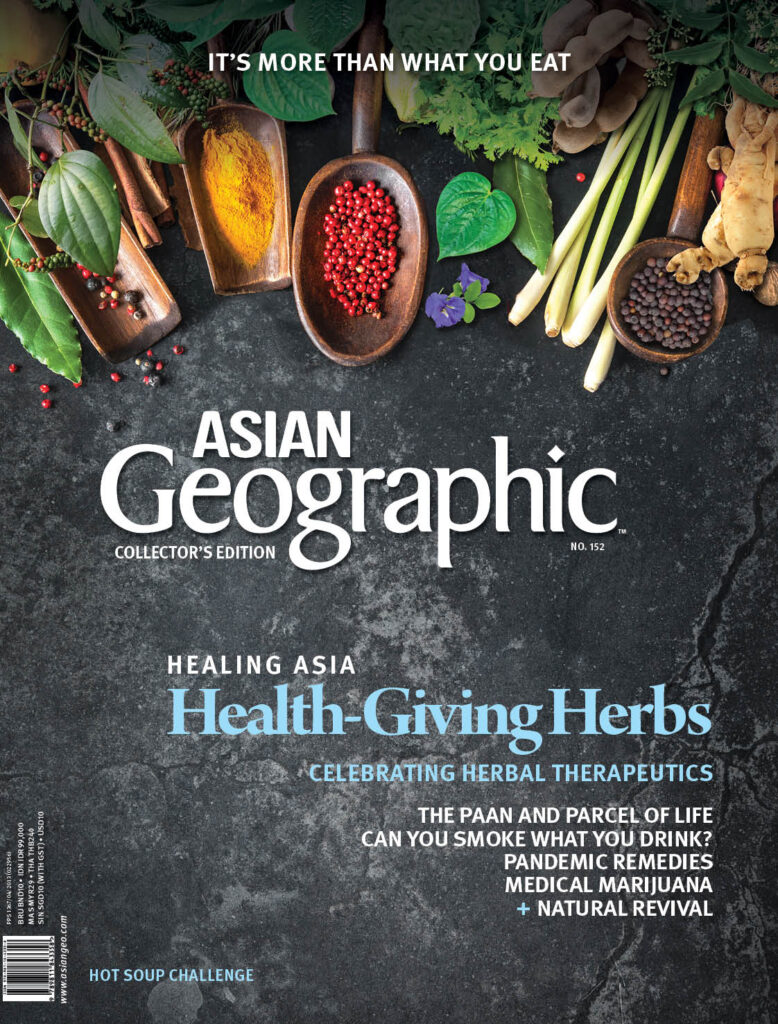 To learn more about Asia’s diverse range of herbs and their countless properties, get your copy of Asian Geographic Issue 1 /2022 here.
To learn more about Asia’s diverse range of herbs and their countless properties, get your copy of Asian Geographic Issue 1 /2022 here.
Subscribe to Asian Geographic Magazine here or for more details, please visit https://www.shop.asiangeo.com/.



